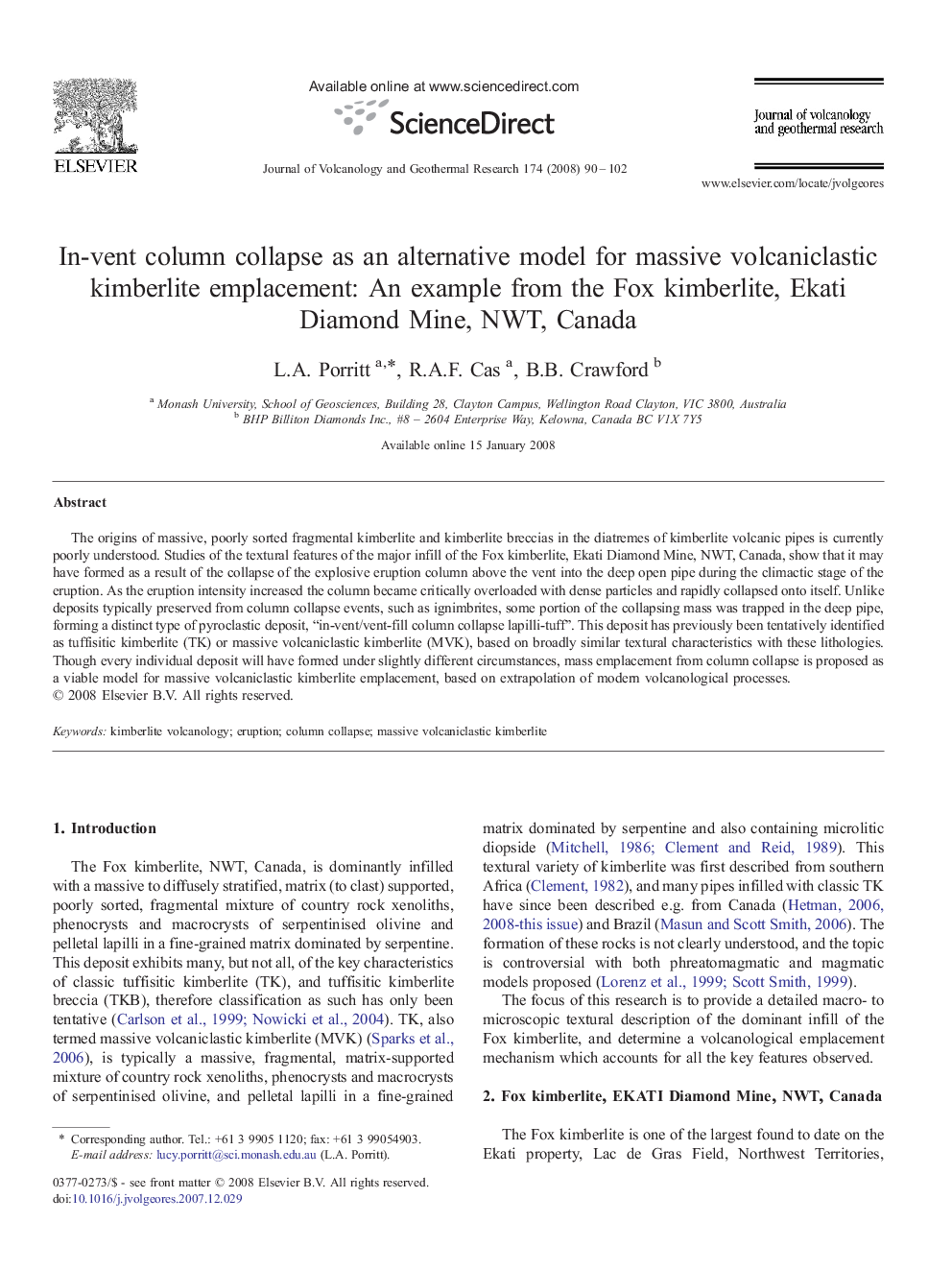| Article ID | Journal | Published Year | Pages | File Type |
|---|---|---|---|---|
| 4714766 | Journal of Volcanology and Geothermal Research | 2008 | 13 Pages |
The origins of massive, poorly sorted fragmental kimberlite and kimberlite breccias in the diatremes of kimberlite volcanic pipes is currently poorly understood. Studies of the textural features of the major infill of the Fox kimberlite, Ekati Diamond Mine, NWT, Canada, show that it may have formed as a result of the collapse of the explosive eruption column above the vent into the deep open pipe during the climactic stage of the eruption. As the eruption intensity increased the column became critically overloaded with dense particles and rapidly collapsed onto itself. Unlike deposits typically preserved from column collapse events, such as ignimbrites, some portion of the collapsing mass was trapped in the deep pipe, forming a distinct type of pyroclastic deposit, “in-vent/vent-fill column collapse lapilli-tuff”. This deposit has previously been tentatively identified as tuffisitic kimberlite (TK) or massive volcaniclastic kimberlite (MVK), based on broadly similar textural characteristics with these lithologies. Though every individual deposit will have formed under slightly different circumstances, mass emplacement from column collapse is proposed as a viable model for massive volcaniclastic kimberlite emplacement, based on extrapolation of modern volcanological processes.
